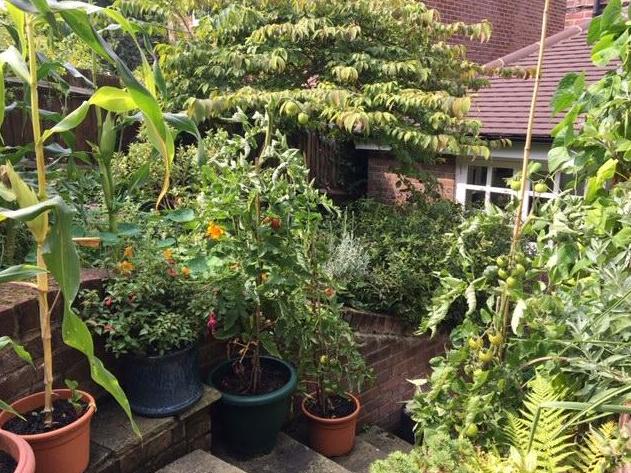In the midst of the pre-lockdown food panic, when tinned tomatoes were being fought over and there were dire warnings about potential lettuce shortages, I hurried to the garden centre to buy seeds. Never mind that none of the vegetables I might grow would actually be ready to eat for at least four months, no one in my house was going to go hungry come August – not on my watch.
We got our supplies just in time, in fact: garden centres closed two days later. Over the next few weeks, we duly planted tomatoes, runner beans, French beans, sweetcorn and courgettes – as well as the nasturtiums my son had picked (my daughter chose poppies, which we’ll scatter soon). The tops of the kitchen cupboards were soon covered with small pots, each with its own green shoot.
I have grown vegetables in past years – mostly beans, which are more or less foolproof. It may be in the blood: my dad had an allotment when I was small, then turned over the top end of the garden to fruit and veg when my brother and I grew too old to require it for a cricket pitch. I’m not sure I was ever an enthusiastic helper, except when it came to eating the produce. But I had been made aware of the possibilities.
I worried about my plants as if they were my children. When gusts blew, I looked nervously out of the window, more than once running out to right a toppled tomato plant
As tendrils began to creep around our kitchen in April and May, I realised I would struggle to find enough space outside to accommodate our crops. I dug up a heap of daffodil bulbs once they had flowered, and spent a couple of weekends excavating a vast mass of ground elder and bindweed from around a miniature willow. I’d bought a couple of large containers and found a load of old plastic pots which I hoped wouldn’t be too small for ever-thirsty tomatoes.
By June, everything was safely in the prepared ground – or at least in a tub. I even found a bit of room for some rocket and spinach. Now all we had to do was wait.
Except of course that’s not how it works. There was watering to be done, almost daily for the pots, and weeding too – especially where the ground elder had been, its root fragments doing their best to make a comeback. One night, slugs demolished some of the rocket seedlings, leaving nothing to be seen. I put down pellets and dared them to return – they did, and ate half a courgette.
I worried about my plants as if they were my children. When gusts blew, I looked nervously out of the window, more than once running out to right a toppled tomato plant – before moving it to a more sheltered spot. On the rare occasions that the rain came, I fretted that the sun might not return and nothing would ripen. And when the heat arrived again, I looked at long-range weather forecasts and prayed for showers. During a recent week away, I begged the neighbours to pop round every two days to keep the pots suitably damp.
But for all the anxiety, I have loved every moment of the journey, as those seeds have turned – as if by magic – into huge plants, triffid-like in the case of the runner beans. Every time I have pottered up and down the garden steps to inspect my wares, I have breathed more easily; every side shoot removed from a tomato plant, and each weed pulled with care from the base of a towering sweetcorn has filled me with a sense of wellbeing. The resultant harvest is almost an irrelevance.
In fact, for the children, it has been a complete irrelevance, since they won’t eat any of it. My son will worry down a little bit of sweetcorn, but is more interested in the wild blackberries that grow over the back fence. When I head out to pick yet more beans, I see even my wife’s face fall. None of it, as it turned out, was necessary to combat any food shortages.
I, meanwhile, am merrily scoffing the lot, held back only by the capacity of my stomach and a vague nod to decorum. The vegetables that have kept me sane, are now keeping me sated. The garden, my haven, inspires new growth all round.


Join our commenting forum
Join thought-provoking conversations, follow other Independent readers and see their replies
Comments